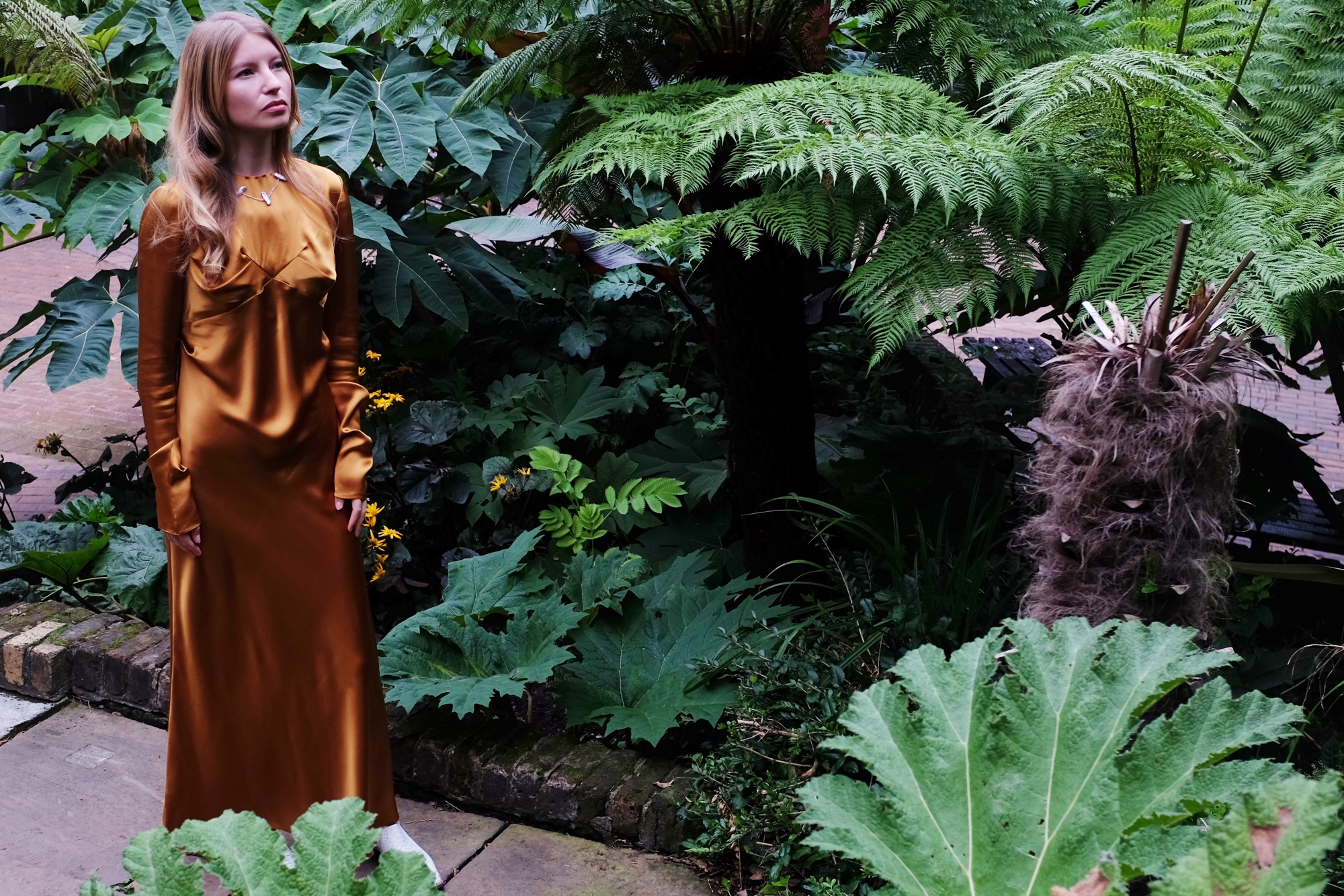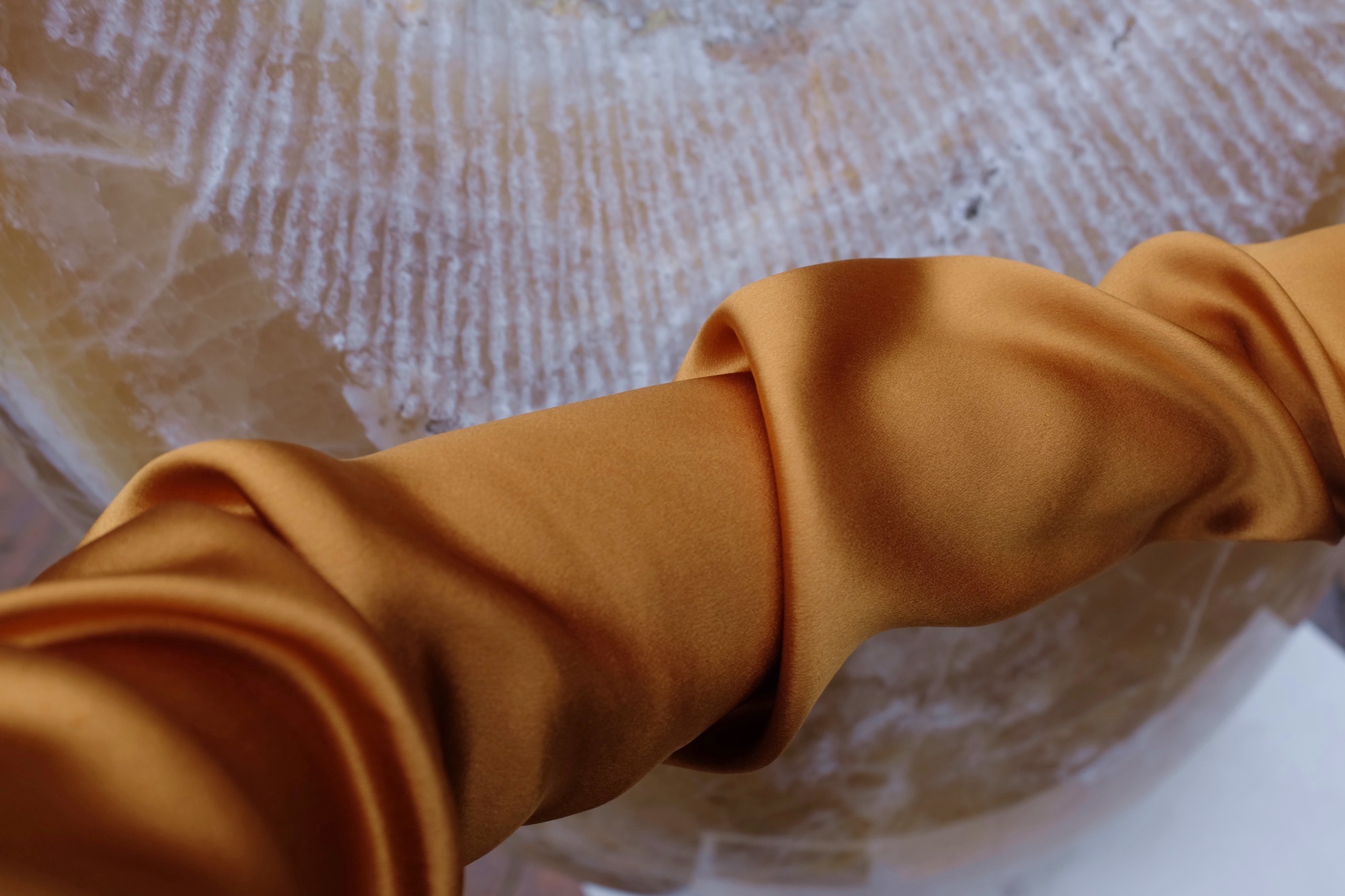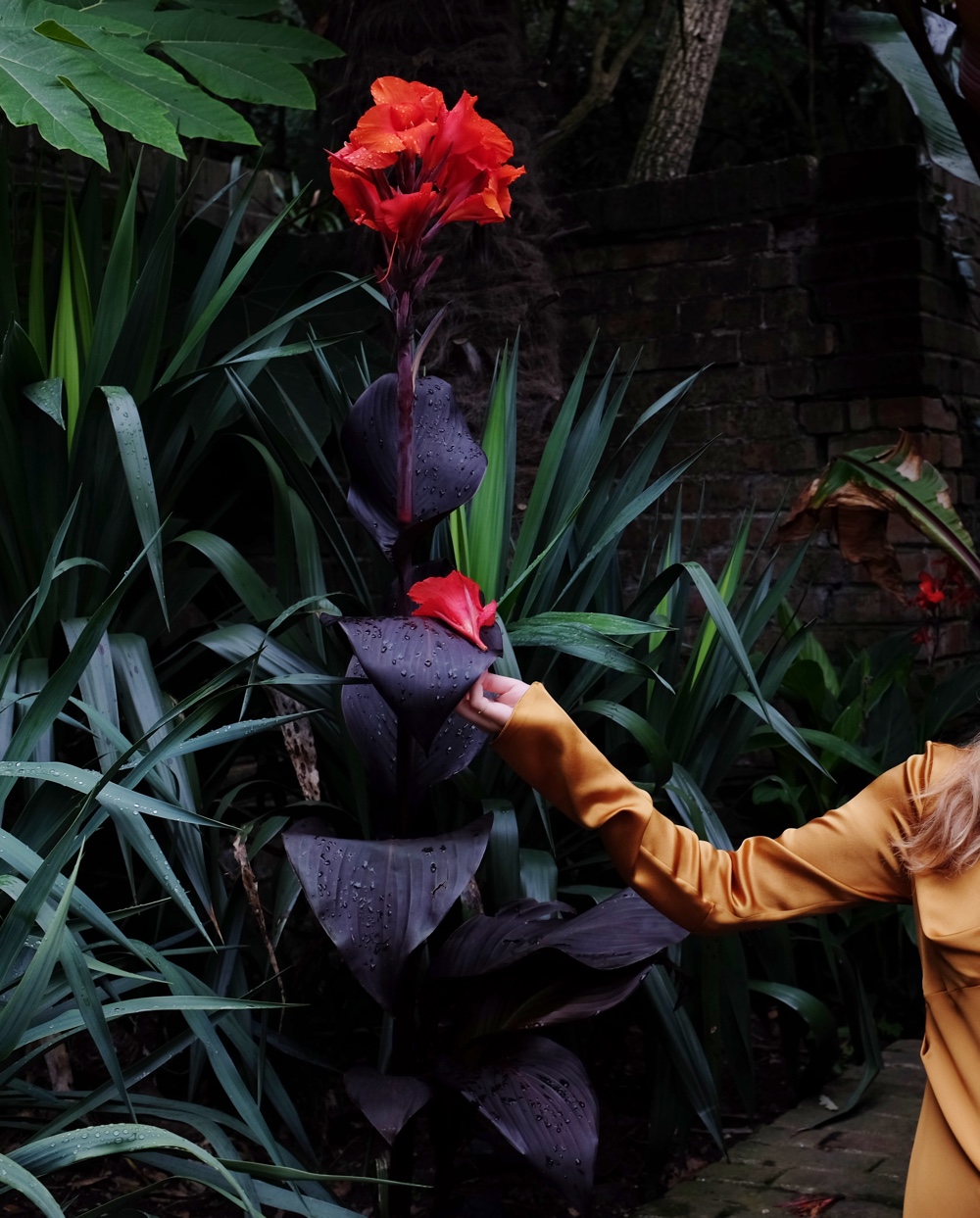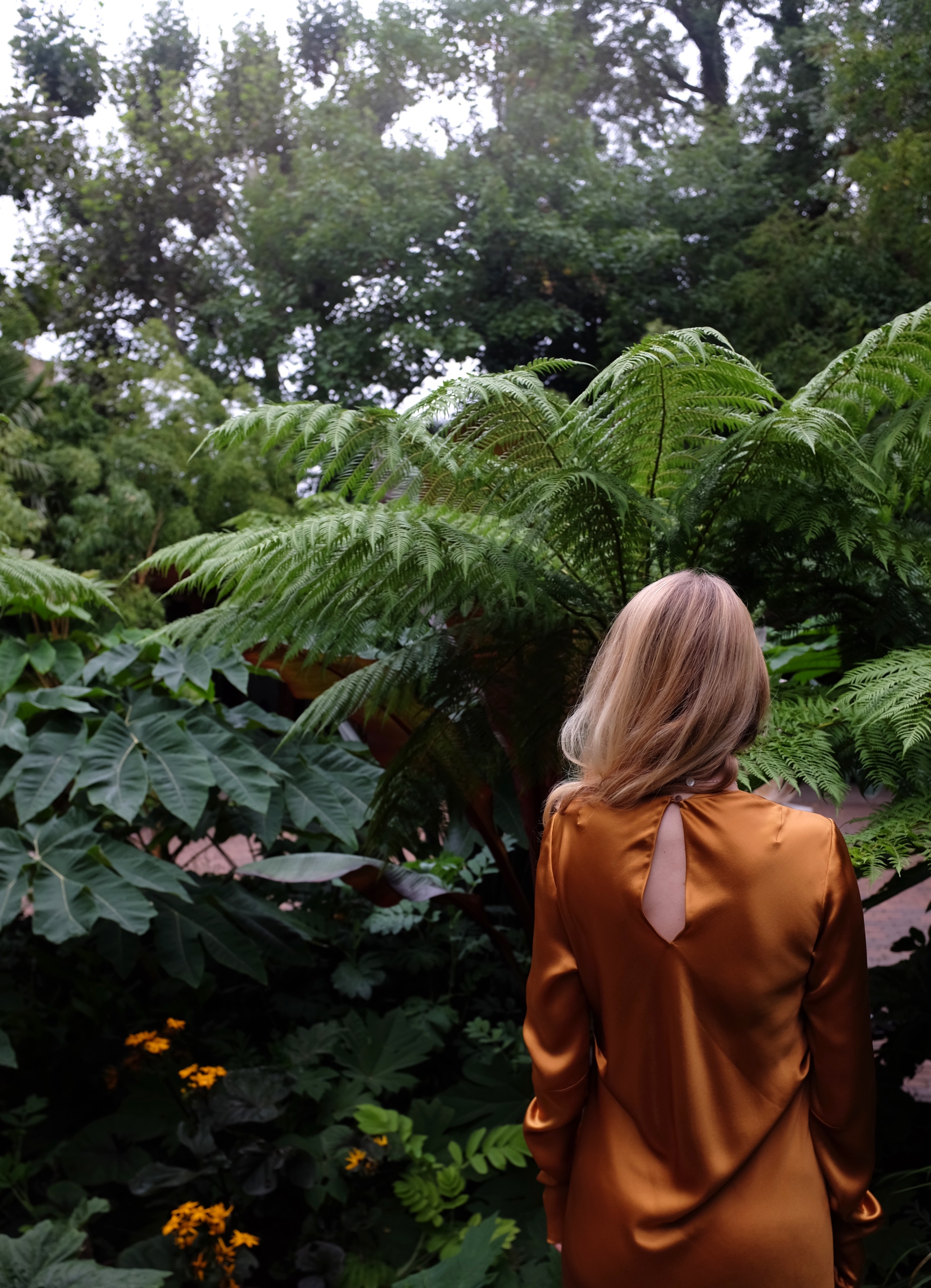
Sometimes less is more. This is the approach of designer Laura Ironside, who set-up her label with the aim of creating seasonless garments, thoughtfully, through sensitive and sustainable manufacturing.
For some, sustainable fashion is a contradiction in terms, and seasonless has only become part of the fashion vocab with the faster cycle encouraged by new shopping habits like see-now, buy-now.
Collections drop quicker than seasons transition. Laura’s approach is more like season-less. With the first collection, Edit-01 under her belt, she is not in any rush to produce Edit-02, adamant to slow down the fashion cycle and let the first collection live. If like me, you quickly fall for her edgy, womanly 1930s silhouettes, rest assured, when Edit-02 comes around it will fit just so, and Edit-01 won’t be pushed to the back of the wardrobe because it’s so identifiably last season.
Another move towards a time when the words sustainable and fashion can comfortably coexist is through garment leasing. Laura is trialling this model to open her luxury pieces to more women. I leased this copper crepe-backed satin silk dress for the price I could have paid for an occasion dress on the high street. The difference is, once the occasion is over, it won’t sit in my wardrobe, but sooner get a lease of life from the next woman that wears it.
Here is my first leasing experience and interview with Laura Ironside.


Laura on the beginning of her label and consciously bringing products into the world. I had worked for some years in London for a number of fashion labels, but had always wanted to return to Scotland to set up my own label. When I first returned I was working with leather and found it very hard to get high-end leather pieces made in the UK. I spent a long time in product development, I met craftsmen and women from all over the UK and it was during this time that I developed a deeper understanding and respect for the craft that goes into making a single product. It also made me appreciate that if you’re deciding to bring new products into the world you need to be conscious of the impact these products are having. It made me re-evaluate my whole approach to designing and starting a brand. Although I was unsuccessful in continuing the leather work, which was very difficult at the time, after I took some time out I slowly began developing the Edit-01 collection and the ethos of the brand was built through that seemingly unsuccessful experience.
Giving Edit-01 time to breathe. I think it’s easy in the industry to feel pressure to quickly create something new, I definitely feel that, especially as I love to create new work too. I have to remind myself to slow down! Obviously the whole ethos of the brand is slowing down and encouraging women to invest in long-lasting pieces so it’s important that I encourage this with how I approach the collections too. At the moment I want to keep focused on this collection and getting out there. It’s great to see the pieces on different body types and see women styling it in different ways. I’m also learning what works and what isn’t and taking that forward into the new collection. It’s important to me to get feedback from our existing audience and learn and grow from that, while also hopefully balancing it with exciting new and fresh ideas.

Those 1930s silhouettes. I love the elegance of the 1930s. I love the idea of women’s clothes being sexy, but without showing off a lot of skin. I wanted the collection to celebrate femininity and the woman’s body, yet still be demure and elegant. I was aiming to give the 1930s silhouettes some edge, bringing them up-to-date whilst still maintaining their elegance.


It can be very challenging for consumers to track the journey of a garment and find out what it is made of, where, by who and under what conditions. As a designer, Laura faces similar challenges seeking transparency from suppliers. It is so difficult. I can give you an example actually – when I was looking for fabrics for the collection I asked 6 different fabric suppliers for details about their manufacturing, ie. their compliance with EU regulations in respect of ecological and ethical procedures. 4/6 either didn’t know, didn’t respond or wouldn’t disclose. It’s a constant challenge, but I think the more we ask questions as designers, as retailers, as consumers, as anyone who wears clothes (!) the more likely it is for transparency to become the norm in supply chains.

How Laura defines seasonless fashion. For me it is about good quality investment pieces, it’s something that’s made well that makes you feel good. I think you can be playful with how you style-up pieces no matter the season and no matter the cut/style or fabric of a garment. Seasonless fashion does not have to be dull either.
I am from Scotland, where the seasons all seem to merge together and you need to be dressed for all eventualities, so perhaps that’s really where my affinity for seasonless fashion comes from.
Why she chose an atelier in London to sample and produce her collection. It was important to me that the collection was produced in the UK. After location, I was then guided by quality of finish and workmanship. I had tried a number of different places but already had a rapport with this particular atelier. I went to visit them in Greenwich and they were just so open and easy to work with. We began sampling with them from then on and now work with them on small batch production.

How Laura’s sustainable business ambitions extend to other personal areas of her life. I am a real fan of second-hand/antique furniture and homeware like vases, kitchen crockery and tins. When I can it always feels better to use fresh produce for cooking and also to buy locally and buy natural products. I’ve enjoyed making some of my own cosmetics recently too. But as ever, it can be so difficult to remain diligent throughout all areas, at every moment, for one reason or another. I think everyone can do the best they can at the period of life they’re at and make positive changes, but I don’t give myself a hard time about it. In the past year or so I’ve got better at just owning less and really thinking about whether or not I need something, in all areas of my life.

Laura’s mission for garment leasing, is this the future for sustainable fashion? I think one of the main things is accessibility, I know that higher price tags for sustainable products makes things so difficult for people who really do want to engage in a more ethical approach to their wardrobe, but don’t feel that they can afford it. Leasing clothes at a lower price opens this up to a wider audience, if garments are shared it reduces the risk of them hanging in a dark corner of someone’s wardrobe unused, or worse, in landfill. Higher price tags can make people feel like they have no alternative but to shop on the high street for their special occasion, even though they would prefer something different, something unique. It also allows people to try something before they potentially invest in a piece.
At the moment we are very much in the trialling stages, we want to listen to our early lease customers and learn, so we can make this service the best it can be. It would be amazing to think of more brands doing something similar in the future, absolutely.

I highly recommend leasing from Laura Ironside. Luxuriously delivered to and collected from your door, it is a dream for those a custom to small space urban living. Why should our experiences be confined by the extent of our storage space? I didn’t need to buy the Laura Ironside Knight dress to own it that day.
©Photographs Reclaimed Woman

